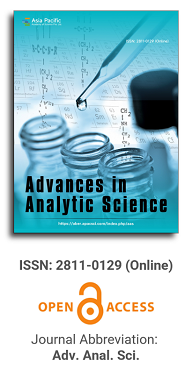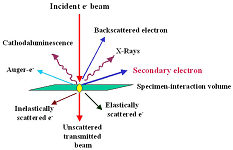
Asia Pacific Academy of Science Pte. Ltd. (APACSCI) specializes in international journal publishing. APACSCI adopts the open access publishing model and provides an important communication bridge for academic groups whose interest fields include engineering, technology, medicine, computer, mathematics, agriculture and forestry, and environment.

This issue focuses on nanotechnology applications in drug detection and biosensing, especially high-performance liquid chromatography and electrochemical detection, improving the accuracy and efficiency of drug residue and heavy metal detection.
Issue release: 30 June 2024
Objective: To develop a method for the simultaneous detection of four sulfonamide residues in prawns—sulfadiazine, sulfathiazole, sulfamerazine, and sulfamethazine—using ultrasound-assisted matrix solid-phase dispersion extraction combined with pre-column derivatization and high-performance liquid chromatography (HPLC). Methods: By optimizing extraction conditions, ethyl acetate was chosen as the extraction solvent and florisil as the solid dispersion agent. Sulfonamides were extracted from prawns using ultrasound-assisted matrix solid-phase dispersion, then derivatized with fluorescamine and analyzed by HPLC with fluorescence detection. Results: The sulfonamides exhibited excellent linearity within the concentration range of 2–100 μg/L, with correlation coefficients greater than 0.999. Detection limits were 0.5 μg/kg and quantification limits were 2 μg/kg. Spike recoveries for blank prawn samples ranged from 84.4% to 93.9% at 2 and 20 μg/kg, with relative standard deviations (n = 3) below 7.7%. Conclusion: The method is straightforward, efficient, and highly precise, meeting the standards for residue analysis.
Issue release: 30 June 2024
Iron-based nitrogen co-doped carbon dots (Fe, N-CDs) were synthesized from taro leaf biomass via a hydrothermal process using ammonium ferric sulfate dodecahydrate and urea. The synthesized Fe, N-CDs exhibited peroxidase-like activity and strong fluorescence at 450 nm. A dual-mode colorimetric/ratiometric fluorescence assay for hydrogen peroxide (H2O2) detection was developed using Fe, N-CDs and o-phenylenediamine (OPD) as probes. In the presence of H2O2, OPD was oxidized to 2,3-diaminophenazine (DAP), which is yellow and absorbs at 420 nm. Under 360 nm excitation, DAP emits fluorescence at 550 nm and quenches the fluorescence of Fe, N-CDs at 450 nm due to the internal fluorescence filtering effect. This enables the quantitative analysis of H2O2 using the absorbance at 420 nm (A420) and the fluorescence intensity ratio of DAP to Fe, N-CDs (I550/I450). Since glucose oxidase can convert glucose to H2O2, the assay was extended to glucose determination. At pH 5.4, 40 ℃, with 1.75 mmol/L OPD and a 25-minute reaction time, the method showed a linear relationship between the A420 and I550/I450 values and glucose concentration in the range of 1.0~100 μmol/L, with detection limits of 0.8 μmol/L (colorimetry) and 0.6 μmol/L (ratiometry). The method was validated for glucose detection in human serum.
Issue release: 30 June 2024
Graphene quantum dots (GQDs) with a uniform particle size were successfully synthesized using a simple in-situ electrolytic graphite rod method at a specific current density. Nafion/GQD-modified glassy carbon electrodes (nafion/GQDS/GCE) were then fabricated. Anodic stripping voltammetry and differential pulse voltammetry were utilized for the detection of heavy metals, specifically Pb(II) and Cd(II), as well as chloramphenicol. The results indicated that the dissolution currents for Pb(II) and Cd(II) increased with their concentrations, showing a strong linear relationship. The linear range for Pb(II) was 4.82 × 10−8 to 9.65 × 10−7 mol/L (R² = 0.9923), and for Cd(II), it was 1.07 × 10−7 to 1.96 × 10−6 mol/L (R² = 0.9912), with detection limits of 1.61 × 10−8 mol/L for Pb(II) and 3.57 × 10−8 mol/L for Cd(II). The nafion/GQDS/GCE exhibited significant electrocatalytic activity towards chloramphenicol, with an irreversible reaction involving 6 electrons and an electron transfer rate constant (KS) of 105.4 s−1. The catalytic reduction current for chloramphenicol at the modified electrode ranged from 5.00 × 10−7 to 2.50 × 10−3 mol/L, showing a good linear relationship, and the detection limit (S/N = 3) was 1.67 × 10−7 mol/L. The nafion/GQDS/GCE also demonstrated excellent anti-interference, stability, and reproducibility, yielding satisfactory results for the detection of actual samples.
Issue release: 30 June 2024
Haemophilus influenzae type b is an important human pathogen causing several invasive diseases in children under five years of age, against which glycoconjugated vaccines based on polyribosylribitol phosphate have been licensed. Quimi-Hib® is the first and only vaccine against this pathogen using the polysaccharide obtained by chemical synthesis. The Active Pharmaceutical Ingredient is produced by the Center for Genetic Engineering and Biotechnology and is obtained from its conjugation to tetanus toxoid. In the present report, a characterization of polyribosylribitol phosphate was performed using the high performance molecular exclusion chromatography technique with ultraviolet detection at 215 nm. Three batches were evaluated in the study and the elution profile was determined on a SuperdexTM 75 10/300 GL Increase column with a purity percent of 77.42 ± 8.97 and an average molar mass of 7381 Da ± 210.93. The main impurity present in polyribosylribitol phosphate is dimethyl sulfoxide, the solvent used in the activation reaction with the N-hydroxysuccinimidyl ester of β-maleimidopropionic acid. The polyribosylribitol phosphate was purified by filtration with a 2000 Da Amicon Ultra-15 to 99.1% purity and conjugated to tetanus toxoid. The yield of the conjugation reaction with the purified polysaccharide was 30.0% ± 1.77% which shows no significant difference with the control which was 33.7% ± 3.57% demonstrating that dimethyl sulfoxide does not affect the performance of the conjugation reaction.
Issue release: 30 June 2024
Cyclosporine A and sirolimus are commonly used immunosuppressants in organ transplantation, known for their complementary and synergistic mechanisms of action. However, due to their narrow therapeutic index and critical dosing requirements, maintaining their concentrations within a specific blood range is essential for optimal efficacy and safety. This study systematically compared the chromatographic behaviors of cyclosporine A and sirolimus using a biological liquid chromatography (BioLC) column and traditional liquid chromatography (TraLC) columns under identical conditions. The results indicated that the BioLC column, specifically ZORBAX 300SB C8 (250 mm × 4.6 mm, 5.0 μm), provided the highest peak heights and the narrowest peak widths for both drugs. The number of theoretical plates for both drugs significantly increased on this column when acetonitrile in the mobile phase exceeded 70%. Retention times on both column types were minimally affected by formic acid and trifluoroacetic acid in the mobile phases. Additionally, the ZORBAX 300SB C8 column exhibited a higher number of theoretical plates and a distinct relationship between retention factor and column temperature compared to the TraLC columns. For analysis, a 50 μL whole blood sample was prepared through protein precipitation with 1 mol/L sodium hydroxide, extracted into 500 μL ether-methanol (95:5, v/v), and then centrifuged. The organic layer was evaporated under nitrogen at 50 ℃, and the residue was reconstituted in 200 μL methanol. Cyclosporine A and sirolimus were then separated via isocratic elution on the ZORBAX 300SB C8 column.
Issue release: 30 June 2024
Nanoscience and Technology has become popular and touched almost every branch of science and technology. Textile engineering is also not exception. Various nanoparticles are being used in smart textiles and technical textile products. Medical textile is an important area and have much opportunities for innovation and discoveries. Therefore, nanomaterials are used in medical textiles to have exotic properties. Herein we have discussed several methods for the characterization of materials at nanoscale. The common spectroscopic techniques like UV-Visible spectroscopy and microscopic techniques like scanning electron microscopy and transmission electron microscope routinely used in material characterization are discussed in detail. In the last section of the article we discussed various applications of nanomaterials in modern medical textile. The nanomaterials are used in surgical gowns, sanitary napkins, UV protection appliances, antimicrobial coating, sutures etc. Some advanced nanomaterials can be used in disease diagnosis, flame retardants, efficient drug delivery systems etc.
Issue release: 30 June 2024
Sensors are devices that receive input and produce an analog or digital output signal. They are found in almost every aspect of human activity, from robotics, medical devices, consumer electronics, automobiles, to residential appliances and industrial automation [1]. In recent years, the rapid increase of interconnected devices that are connected to the internet has defined a new technological term: the “Internet of Things” (IoT). IoT has created a demand for acquiring, collecting, and processing vast amounts of data, thus shaping the upcoming new industrial revolution “Industry 4.0” [2].
1.jpg)
Prof. Sivanesan Subramanian
Anna University, India


 Open Access
Open Access



.jpg)
